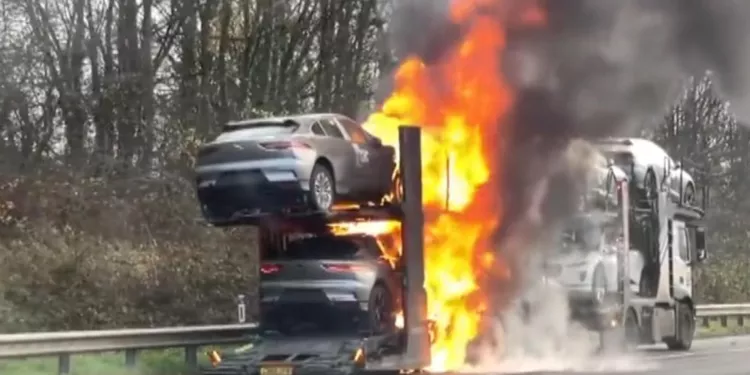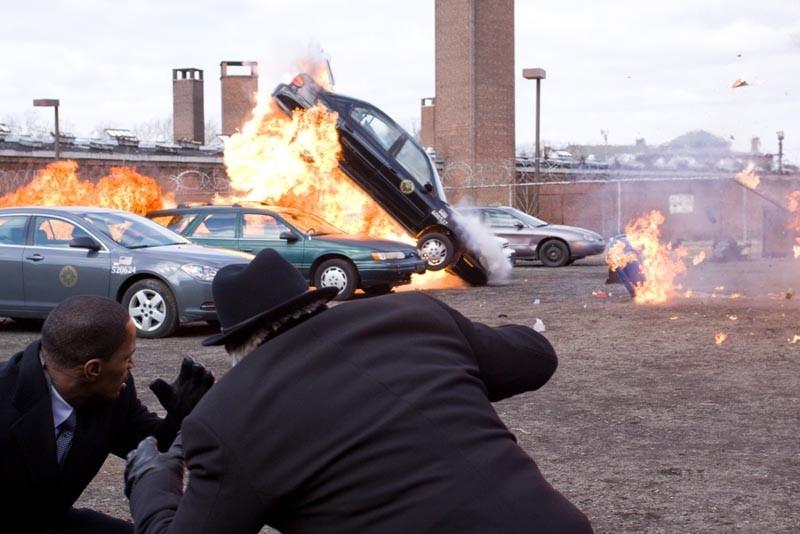
Posted on 05/08/2024 11:12:01 AM PDT by Red Badger

Safety concerns around electric vehicles continue to mount with Australian fire and rescue services in New South Wales stating they might have to make a “tactical disengagement” of a trapped car accident victim if the battery is likely to explode. Australian journalist Jo Nova covered the story, which was first mentioned in the EV blog The Driven, and commented: “They say the first responders need more training as if this can be solved with a certificate, but the dark truth is they’re talking about training the firemen and the truck drivers to recognise when they have to abandon the rescue.”
The Driven, a widely-read blog that seems highly sympathetic to a rollout of EVs, was reporting on recent testimony given to the NSW Government’s Electric and Hybrid Vehicle Batteries Inquiry. The writer suggested that first responders did not have adequate training to deal with electric vehicle collisions, and in the most serious cases, crews could be forced to abandon rescues. One particular area of concern seemed to revolve around the need to extract a trapped casualty quickly after a crash by dragging the person out in a “very undesirable manner”. Fires are a grave risk in any vehicle accident, but they can be quickly brought under control in an internal combustion engine (ICE) vehicle.
Worries about the potential dangers inherent in EVs is likely to grow as numbers on the roads continue to rise. EV battery explosions can occur very quickly, triggering the release of highly toxic gases. When they roar into thermal overdrive, they create very high temperatures and are very difficult to extinguish. The explosion can occur after almost any collision, or be due to a fault in the initial manufacture. The fire often takes hours to control and it can reignited days after it was thought to be out. With Net Zero fanatics desperate to drive ICE cars off the road in short order, EVs are the only mass private transport solution offered. Many of the issues, including safety, that make them an inferior product compared to petrol-powered combustion cars are often ignored.
Just what can be involved in putting out a fire in an EV was dramatically detailed in a recent press release from the Wakefield Fire Dept in Massachusetts. It was called out to deal with a burning Tesla on a snowy Interstate 95, and reported:
Wakefield Engine 1 and Ladder 1 initiated suppression operations, applying copious amounts of water onto the vehicle. Multiple surrounding mutual aid communities responded as well to support firefighting operations and to create a water shuttle to bring water continually to the scene. Engines from Melrose, Stoneham, Reading, Lynnfield as well as a Middleton water tanker assisted. Firefighters had three 1¾-inch hand lines as well as a ‘blitz gun’ in operation to cool the battery compartment… Lynnfield crews established a continuous 4-inch supply line from Vernon Street up to the highway. The fire was declared under control and fully extinguished after about two and a half hours… The vehicle was removed from the scene after consulting with the Hazmat Unit… The crews did a great job, especially in the middle of storm conditions – on a busy highway.
There is little doubt that EV fires are on the rise. In the U.K., CE Safety runs Freedom of Information checks on local fire brigades and its latest survey shows an alarming rise in conflagrations. In Greater London in the 2017-2022 period, there were a reported 507 battery fires from a number of EV types, but CE Safety found a “gigantic” 219 conflagrations in 2022-23 alone. Lancashire was said to rank second with 15 EV battery fires, but this was 10 more in a single year than recorded in the five years between 2017-2022. Overall “it was concerning” to discover that the number of electric battery fires during 2022-2023 was higher in most areas than the data showed over five years from 2017 to 2022. During that year, 14 buses suffered battery fires.
There was a substantial increase in the number of e-bikes catching fire, with CE Safety noting that lithium is highly flammable and reactive. “Over-charging presents a massive risk to households with lithium-powered vehicles,” the safety organisation observed.
Concern is also rising over the transportation of EVs on car ferries. Recently, Havila Kystruten, which operates a fleet of car ferries around the coast of Norway, has banned the transportation of electric, hybrid and hydrogen vehicles. According to a report in the Maritime Executive, it is the latest step by the shipping industry, “which has become acutely aware of the increasing danger of transporting EV and other alternate fuel vessels”.
Havila’s Managing Director Bent Martini said a risk analysis had shown a fire at sea in a fossil fuel vehicle could be handled by on-board systems. “A possible fire in electric, hybrid or hydrogen cars will require external rescue efforts and could put people on board and the ships at risk,” he said. That of course is the nightmare scenario. If fire breaks out on a ferry making a 20-mile crossing in good weather, the chances of all passengers and crew surviving are good. Less good, perhaps, if fire was to break out and fill the ship with toxic smoke in the middle of a stormy November night while crossing the Bay of Biscay. Chances of survival would be diminished if the high temperatures caused nearby EVs to explode.
Mercifully, we are less and less likely to see such accidents. The list of disadvantages of EVs is lengthening by the day. Environmental concerns about the manufacture and mining of raw materials have been raised, while ‘range anxiety’ is common among drivers. EVs are more expensive than ICE cars, while knackered batteries mean that second-hand values are very poor. For those who would see the back of them, the graph below might provide some comfort.
This shows the recent decline in the share price of the American car hire giant Hertz. Back in 2021, the company pushed ahead with huge purchases of Teslas. In January it dumped 20,000 of them, and last month pushed another 10,000 onto a sagging second-hand market. Out in the real world – the world where people create wealth by providing what other people actually want – fewer drivers seemed willing to hire them. The share price tells its own sorry story. Meanwhile, EV sales across Europe tend to be driven by unsustainable tax breaks, while the cars are mainly popular with wealthy people as a second or third city runabout. An enforced political adoption of EVs is likely to destroy vast swathes of the European car industry, unable to compete with cheap Chinese imports.
If the aim is to take away personal transport for the masses, EVs are an excellent idea. Whether that will ultimately play well at the ballot box is another matter.
Chris Morrison is the Daily Sceptic’s Environment Editor.
Chinese EVs explode by the trailer load
EVs are the disposable razor of transport , use it and no one will want it and in a couple of years of paying for it you’ll owe money on a car that is only worth scrap value
Well, they did invent the firecracker...................
Oversized electric golf cart fanbois not pleased with this.
They might post a pic of some goofy looking Hot Wheels thing.
Must be the Michael Bay Model.
I think the Chinese have built in a way to make these batteries ignite all across the world at once.
If they didn’t they were not following the instructions from “The Art of War”.

With "electric cars" composing a significant fraction of her cargo.
Chinese cannot differentiate between EV’s and fireworks.

If I were a cargo line I’d demand an extra insurance policy paid for by the car maker or refuse to carry the cars.........................

She later sank.
EV’s exploding in underground garages of malls and hospitals and airports will be more than a nuisance.
With EVs being pricey as they are, the natural thing would be to get them cheaper from China, but if I understand right, these Chinese vehicles are subject to even higher incidence of problems than the home-built ones. That’s no good no matter what the price is. If the U.S. would continue to produce ICE vehicles & forget the EVs, this would also tend to build up the used car market & we’d all be better off. If U.S. production would start including simpler vehicles with lower prices, then we would continue to benefit even more.
EV’s exploding in underground garages of malls and hospitals and airports will be more than a nuisance.
“Tactical disengagement”. Used to be called Run Like Hell.


Some Ting Wong?
Disclaimer: Opinions posted on Free Republic are those of the individual posters and do not necessarily represent the opinion of Free Republic or its management. All materials posted herein are protected by copyright law and the exemption for fair use of copyrighted works.